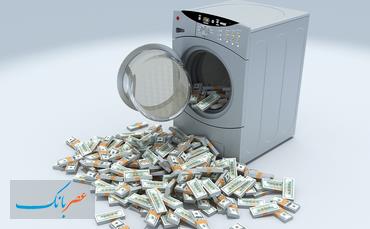? What is Anti Money Laundering

Asrebank: Though anti-money-laundering laws cover only a relatively limited number of transactions and criminal behaviors, their implications are extremely far reaching. An example of AML regulations are those that require institutions issuing credit or allowing customers open accounts to complete a number of due-diligence procedures to ensure that these institutions are not aiding in money-laundering activities. The onus to perform these procedures is on the institutions, not the criminals or the government.
? What is Anti Money Laundering
Money laundering is the process of transforming the proceeds of crime into ostensibly legitimate money or other assets. However, in a number of legal and regulatory systems, the term money laundering has become conflated with other forms of financial crime, and sometimes used more generally to include misuse of the financial system (involving things such as securities, digital currencies, credit cards, and traditional currency), including terrorism financing and evasion of international sanctions. Most anti-money laundering laws openly conflate money laundering (which is concerned with source of funds) with terrorism financing (which is concerned with destination of funds) when regulating the financial system.
According to the United States Treasury Department:
Money laundering is the process of making illegally-gained proceeds (i.e. “dirty money”) appear legal (i.e. “clean”). Typically, it involves three steps: placement, layering and integration. First, the illegitimate funds are furtively introduced into the legitimate financial system. Then, the money is moved around to create confusion, sometimes by wiring or transferring through numerous accounts. Finally, it is integrated into the financial system through additional transactions until the “dirty money” appears “clean.”
Money obtained from certain crimes, such as extortion, insider trading, drug trafficking and illegal gambling is “dirty”. It needs to be cleaned to appear to have been derived from legal activities so that banks and other financial institutions will deal with it without suspicion. Money can be laundered by many methods, which vary in complexity and sophistication.
Different countries may or may not treat payments in breach of international sanctions as money laundering. Some jurisdictions differentiate these for definition purposes, and others do not. Some jurisdictions define money laundering as obfuscating sources of money, either intentionally or by merely using financial systems or services that do not identify or track sources or destinations.
Other jurisdictions define money laundering to include money from activity that would have been a crime in that jurisdiction, even if it were legal where the actual conduct occurred. This broad brush of applying the term “money laundering” to merely incidental, extraterritorial, or simply privacy-seeking behaviors has led some to label it “financial thoughtcrime”.
Many regulatory and governmental authorities issue estimates each year for the amount of money laundered, either worldwide or within their national economy. In 1996, the International Monetary Fund estimated that two to five percent of the worldwide global economy involved laundered money. The Financial Action Task Force on Money Laundering (FATF), an intergovernmental body set up to combat money laundering, stated, “Overall, it is absolutely impossible to produce a reliable estimate of the amount of money laundered and therefore the FATF does not publish any figures in this regard.”[5] Academic commentators have likewise been unable to estimate the volume of money with any degree of assurance. Various estimates of the scale of global money laundering are sometimes repeated often enough to make some people regard them as factual—but no researcher has overcome the inherent difficulty of measuring an actively concealed practice.
Regardless of the difficulty in measurement, the amount of money laundered each year is in the billions (US dollars) and poses a significant policy concern for governments. As a result, governments and international bodies have undertaken efforts to deter, prevent, and apprehend money launderers. Financial institutions have likewise undertaken efforts to prevent and detect transactions involving dirty money, both as a result of government requirements and to avoid the reputational risk involved. Issues relating to money laundering have existed as long as there have been large scale criminal enterprises. Modern anti-money laundering laws have developed along with the modern War on Drugs. In more recent times anti-money laundering legislation is seen as adjunct to the financial crime of terrorist financing in that both crimes usually involve the transmission of funds through the financial system (although money laundering relates to where the money has come from, and terrorist financing relating to where the money is going to).

